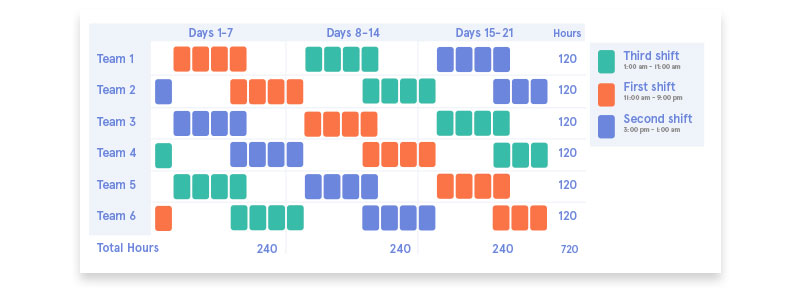

If employees are not told of the length of their shift in advance, they must be paid for 3 hours or for the time they worked, whichever is more.Įmployers have the right to schedule and change shifts to meet their business needs. Wages for reporting to work are intended to compensate an employee who is normally scheduled to work greater than 3 hours and is sent home early without performing work, or is permitted to work for less than 3 hours.Įmployees are generally entitled to 3 hours of reporting pay unless the employer has scheduled a shorter shift. When do wages for reporting to work apply? If prior to employees reporting to work, the employer advises the employees the shift has been cancelled, wages for reporting to work do not apply. When weather conditions or changes affect how work can be done, resulting in employees being sent home On−call situations where employees report to work When an employer has too many people scheduled to work and sends one or more employees home When an employer sends employees home before the end of their scheduled shift because business is slow Some situations where reporting wages apply include: The employee is entitled to wages for 2 hours of work because this was the length of the scheduled shift. For example, the employee is scheduled for 2 hours but is sent home after 1 hour. If the scheduled shift is shorter than 3 hours, employees are entitled to be paid for the length of the scheduled shift. The employee is entitled to wages for 3 hours of work. For example, an employee is scheduled to work for 6 hours, but is sent home after 2 hours. For more information contact Employment Standards:Įmployees must be paid for at least 3 hours at their regular wage rate if the scheduled shift is longer than 3 hours.Do wages for reporting for work apply to staff meetings?.


Do wages for reporting to work apply to an on-call employee?.Does an employer need to pay an employee when they are on-call?.Can an employer change the work schedule?.Can an employer have an open-ended schedule?.How much are employees paid for reporting to work?.When do wages for reporting to work apply?.
#4 3 3 4 work schedule full
Employees who report for work are paid for at least three hours work, or their full shift, whichever is less. In other situations employees are called in to work when they were not scheduled.
#4 3 3 4 work schedule code
Plan ID: A code used to uniquely identify the shift plan in Snap Schedule employee scheduling software.


 0 kommentar(er)
0 kommentar(er)
